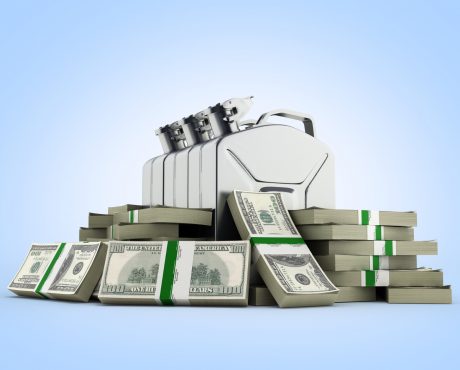Making Money No Matter Where the Stock Market Goes Next
It’s been more than eight years since the stock market started to recover from the last financial crisis. Huge gains have been made during this prolonged bull market. From March 2009 to today, the S&P 500 Index has returned an astounding 258%.
Many analysts have been saying that the “easy money” has already been made. Indeed, with double-digit capital gains being the norm for the most part of the last decade, it makes investors wonder how long this bull market could last.
I’m not trying to predict when the next stock market correction is going to arrive. In fact, there were plenty of times where reality turns out to be drastically different than the predictions of some of the highest profile Wall Street forecasters.
What I do know, though, is that there is a way to make money no matter where the stock market goes next.
How is that possible? Well, just take a look at dividends, something that’s largely forgotten in today’s stock market.
When a company makes money, it has to decide what it wants to do with it. The company may choose to invest in future projects, buy back its shares, or pay a dividend, just to name a few options.
Now note this: for the company to pay a dividend, it doesn’t need the approval of the stock market.
In other words, it does not matter where the stock market is going to go next. If the company can pay a steady dividend, investors can count on this money, even when the stock market enters a correction phase.
I do not hold the opinion that paying a dividend is always the best way for a company to spend the money. If there is a project from which the company can earn a great return in the future, it may be in its shareholders’ best interests to invest in the project.
But for investors that want to earn a return regardless of market conditions, dividend stocks should be at the top of their shopping list.
Boost Portfolio Returns with This 7.7% Yielder
Today’s top dividend stock is a 7.7% yielder from the energy sector.
I know what you are thinking: “How can an energy company deserve the attention of income investors?”
Indeed, since the downturn in oil and gas prices started in the summer of 2014, companies in the energy sector have been frequently associated with production cuts, job cuts, and even dividend cuts.
The 7.7% yielder I’m looking at, however, has been an exception. This is because the company is not really in the business of producing oil. Instead, it owns and operates what are essentially toll roads and storage depots of energy products.
iStock.com/kodda
The dividend stock in question is Buckeye Partners, L.P. (NYSE:BPL), a master limited partnership headquartered in Houston, Texas. It owns and operates a diversified network of midstream assets consisting of more than 6,000 miles of pipeline and more than 120 liquid petroleum products terminals. In terms of the volume delivered, Buckeye is one of the largest independent liquid petroleum products pipeline operators in the U.S. The partnership’s terminal network has a storage capacity of over 115-million barrels.
Buckeye’s core business is providing transportation, storage, and marketing solutions of liquid petroleum products. Because it is not drilling new wells, it does not have to worry too much about the price of oil.
Here’s the best part: due to the nature of Buckeye’s business, the partnership is known for generating stable, fee-based cash flows. In the first quarter of this year, approximately 96% of Buckeye’s adjusted earnings before interest, tax, depreciation and amortization (adjusted EBITDA) was fee-based. (Source: “Annual Meeting of Limited Partners,” Buckeye Partners, L.P., June 6, 2017.)
Also Read:
The Best Pipeline Stocks for Retirement Income
Stable cash flows allow the partnership to pay stable dividends. Right now, BPL stock has a quarterly distribution rate of $1.25 per unit, translating to an annual dividend yield of 7.7%.
A handsome dividend yield is not the only reason why income investors should consider Buckeye. Over the years, the partnership has also been raising its payout.
As you can see from the chart above, Buckeye stock has raised its dividend despite the downturn in the energy sector. As a matter of fact, the partnership has been raising its payout every year for more than a decade. Buckeye has paid uninterrupted quarterly cash distributions since its initial public offering in December 1986. (Source: “Distribution History,” Buckeye Partners, L.P., last accessed July 18, 2017.)
What the chart also shows is that the partnership has substantially grown its business. The increase in Buckeye’s adjusted EBITDA has been much larger than the increase in its dividend over the last several years. In fact, Buckeye achieved a distribution coverage ratio of 1.08 times in the first quarter of 2017, leaving a margin of safety. (Source: “Buckeye Partners, L.P. Reports First Quarter 2017 Financial Results,” Buckeye Partners LP, May 5, 2017.)
In a market where high-momentum stocks are making double-digit moves every other day, Buckeye is a name that easily gets ignored. But for investors who are looking for a safe and steady stream of income, its 7.7% yield is certainly worth considering.
